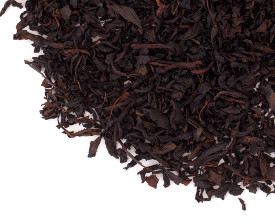The Origin of Earl Grey Tea

The Origin of Earl Grey Tea: Love it or hate it, Earl Grey is inarguably the grand champion of tea flavors. It’s one of the most commonly consumed varieties of tea in the world. Earl Grey blends come in hundreds of varieties, and it’s been used as inspiration for culinary ventures all around the globe. The demand for this tea is so great that it’s sold just about anywhere, from master tea blenders to local grocers—a testament to its long-standing fame. But where did Earl Grey come from, exactly?
Traditionally, Earl Grey tea refers to a black tea flavored with bergamot oil. The oil is a flavor agent procured from the rind of bergamot orange and gives Earl Grey its distinctive, citrus-like flavor. Though the origins of how this tea came to be are debated, the name ‘Earl Grey’ was derived from a fellow named Charles Grey, the Prime Minister of the United Kingdom between the years of 1830 and 1834.
Charles Grey isn’t the most interesting or outrageous of historical figures, but a lot happened during his four years as Prime Minister: The Abolition of Slavery Act, the Factory Act, and the end of the East India Company’s monopoly over Britain’s trade with China. Specifically, it was ending the monopoly over Chinese trade that drastically changed the way tea was imported to the UK. This caused tea to surge in popularity all over the UK and lessened the burden on Chinese traders exponentially. Because of this, it’s believed that the original Earl Grey tea was Chinese in origin.
While purely speculation, one likely story is that the tea was gifted to Charles Grey by a Chinese ambassador. The original tea enjoyed by Charles Grey probably wasn’t flavored with bergamot. After all, production of the bergamot orange was limited to Italy at the time. The addition of bergamot oil could have been added later by the British, trying to replicate the taste of the tea gifted to Charles Grey.
While this is the most likely version of the story, there are several other theories on the origin of Earl Grey tea. Another story claims the recipe was gifted to a British soldier for saving the life of a Chinese farmer, and yet another states that the recipe came about as an accident after a shipment of tea and oranges were mixed together in the same crate.
Regardless of how the events unfolded, the Earl Grey we drink today is indeed named after Charles Grey. It’s certain that he had a role in its conception. As big fans of Earl Grey ourselves, we’re certainly glad that he did!

